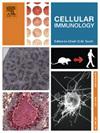来自缺氧预处理的骨髓间充质干细胞的外泌体通过ppar γ介导的m2样巨噬细胞活化减轻原发性Sjögren综合征诱导的皮肤损伤
IF 2.9
4区 医学
Q2 CELL BIOLOGY
引用次数: 0
摘要
BackgroundSjögren’s综合征(SS)是一种自身免疫性疾病,由三联性干燥症状、疼痛和疲劳确定。ss引起的皮肤损伤严重影响人们的健康,但仍未得到解决。越来越多的研究证实,源自骨髓间充质干细胞(BMSCs)的外泌体(Exos)可以促进应激微环境和组织修复。本研究旨在揭示BMSC Exos对ss致皮肤损伤的治疗作用。方法建立SS小鼠模型,分离骨髓间充质干细胞(Exos)和缺氧预处理骨髓间充质干细胞(HExos)的外泌体。采用ELISA、免疫组织化学和免疫荧光法鉴定外泌体对SS的治疗作用。利用高通量测序(HTS)对Exos和HExos之间的差异表达基因进行表征。结果Exos,特别是HExo处理对ss诱导的炎症因子表达、细胞凋亡、ROS沉积和胶原流失的抑制有影响。HTS和RT-qPCR检测显示,PPARγ对hexo介导的ss诱导的皮肤损伤具有重要的保护作用。体外RAW实验证实,PPARγ表达抑制lps诱导的m1样巨噬细胞活化,使用PPARγ拮抗剂T0070907证实了这一点。PPARγ上调通过促进m2样巨噬细胞活化,改善Exos对SS小鼠皮肤损伤的治疗效果。综上所述,我们的研究发现,来自缺氧预处理的骨髓间质干细胞的外泌体通过PPARγ递送减轻了原发性Sjögren综合征诱导的皮肤损伤,并促进了m2样巨噬细胞的活化。本文章由计算机程序翻译,如有差异,请以英文原文为准。
Exosomes from hypoxic pretreated BMSCs attenuate primary Sjögren's syndrome-induced skin injury via PPARγ-mediated M2-like macrophage activation
Background
Sjögren's syndrome (SS) is an autoimmune disorder identified by a triad of sicca symptoms, pain, and fatigue. SS-induced skin injury seriously affects people's health but remains unsolved. Accumulating investigations have confirmed that exosomes (Exos) originating from bone marrow mesenchymal stem cells (BMSCs) can bolster the stressed microenvironment and tissue repair. Present study aimed to unravel therapeutic effects regarding BMSC Exos on SS-induced skin injury.
Methods
In this study, an SS mouse model was constructed, and exosomes from BMSCs (Exos) and hypoxic pretreated BMSCs (HExos) were isolated. The therapeutic effects of exosomes in SS were identified using ELISA, immunohistochemistry, and immunofluorescence. High-throughput sequencing (HTS) was utilized to characterize differentially expressed genes between Exos and HExos.
Results
The data showed that Exos, especially HExo treatments, affected the inhibition of SS-induced inflammatory factor expression, cell apoptosis, ROS deposition, and collagen loss. HTS and RT-qPCR detection showed PPARγ functioned importantly for HExo-mediated protective effects against SS-induced skin injury. The in vitro experiment using RAW confirmed that PPARγ expression inhibited LPS-induced M1-like macrophage activation, which was confirmed using the PPARγ antagonist T0070907. PPARγ upregulation improved therapeutic effects regarding Exos upon skin injury in SS mice by promoting M2-like macrophage activation.
Conclusion
Taken together, our study found that exosomes from hypoxic pretreated BMSCs attenuated primary Sjögren's syndrome-induced skin injury via PPARγ delivery and promoted M2-like macrophage activation.
求助全文
通过发布文献求助,成功后即可免费获取论文全文。
去求助
来源期刊

Cellular immunology
生物-免疫学
CiteScore
8.20
自引率
2.30%
发文量
102
审稿时长
30 days
期刊介绍:
Cellular Immunology publishes original investigations concerned with the immunological activities of cells in experimental or clinical situations. The scope of the journal encompasses the broad area of in vitro and in vivo studies of cellular immune responses. Purely clinical descriptive studies are not considered.
Research Areas include:
• Antigen receptor sites
• Autoimmunity
• Delayed-type hypersensitivity or cellular immunity
• Immunologic deficiency states and their reconstitution
• Immunologic surveillance and tumor immunity
• Immunomodulation
• Immunotherapy
• Lymphokines and cytokines
• Nonantibody immunity
• Parasite immunology
• Resistance to intracellular microbial and viral infection
• Thymus and lymphocyte immunobiology
• Transplantation immunology
• Tumor immunity.
 求助内容:
求助内容: 应助结果提醒方式:
应助结果提醒方式:


